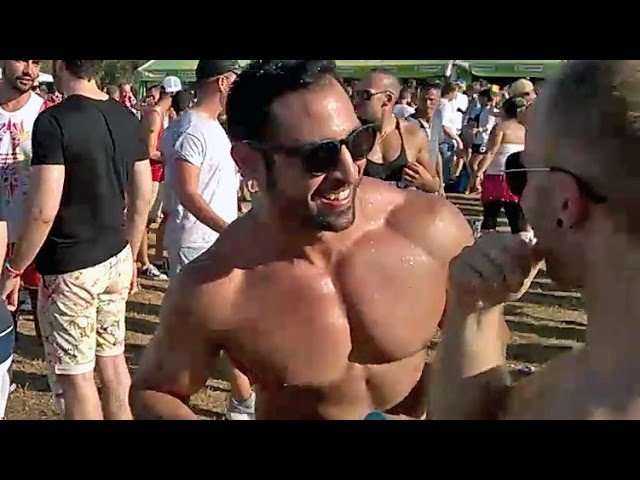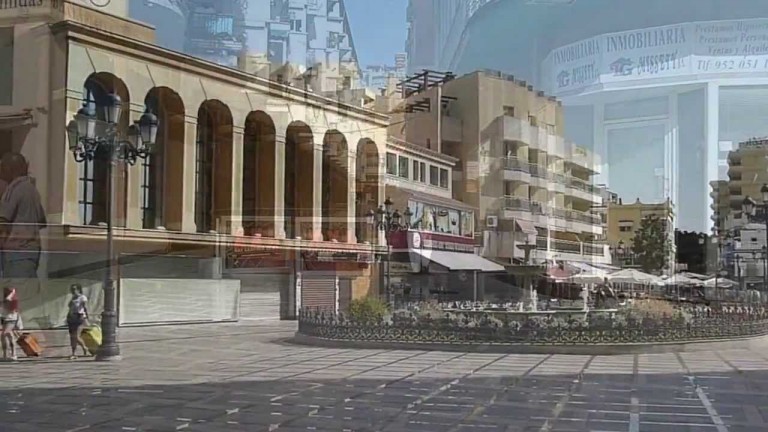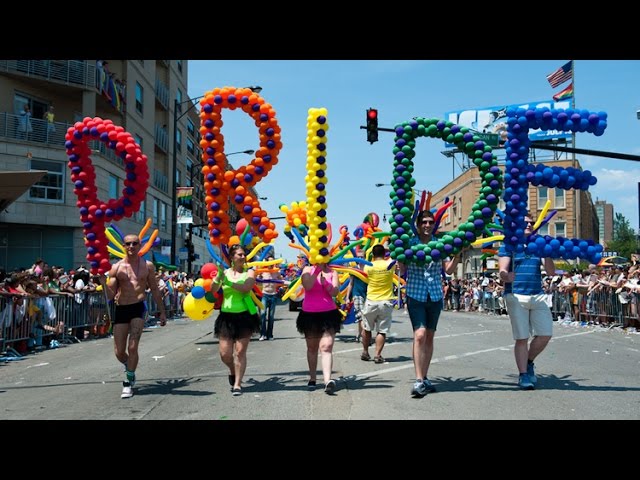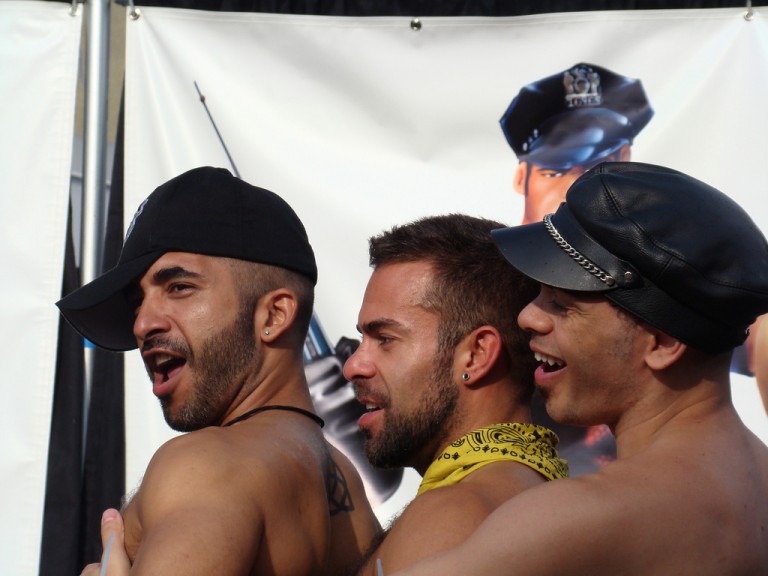Prague buzzes with gay-friendly cafes, bars, and shops
Among cities in Eastern Europe, few have developed a more spirited gay and lesbian following than the sophisticated, photogenic Czech Republic capital of Prague. This remarkably well-preserved and relatively compact city of 1.2 million straddles the Vltava River and buzzes with gay-friendly cafes, bars, and shops.
Prague’s greatest attributes are its rich history, evident in its beautifully preserved architecture, and its lively buzz – the mix of artists, tourists, ex-pats, students, and gays and lesbians who congregate at trendy hangouts throughout the city. In terms of high-end shopping, haute cuisine, and other more epicurean pursuits, this is a fairly average metropolis as European capitals go, but it’s also remarkably liberal and relatively affordable.
Prague is easy to get around on foot, its central neighborhoods safe and easily navigated. Furthermore, the city is served by an efficient and affordable network of trams and buses as well as an extensive metro (subway) system. With its ancient cathedrals, medieval architecture, and narrow and crooked streets, Old Town (Stare Mesto) is undeniably charming but also heavy-handedly commercial, especially near the inevitably jam-packed blocks around the Charles Bridge – here the streets overflow with shops selling jewelry, crafts, and souvenirs of varying quality. The bridge itself is a must, as it offers dramatic views of the city center in one direction, and imposing Prague Castle in the other. Try to go in the morning, before the crowds overrun it.
New Town (Nove Mesto) is adjacent to Old Town and is Prague’s true business center as well as a hub of international hotels, shops, and restaurants. Farther east but still within walking distance are the more residential Zizkov and Vinohrady neighborhoods. In the latter area, you’ll find the heart of Prague’s gay nightclub scene, but even during the day, Vinohrady is worth exploring. Its broad streets and handsome 19th-century buildings are a welcome relief from the tight and crowded lanes of the city center, and you’ll find plenty of eateries and shops along main drags like Vinohradska and Korunni. One good strategy for exploring is to take the metro east to the Flora stop (which is right beneath a rather fancy shopping mall called Palac Flora), and then stroll west back toward the city center (about a 30-minute walk without stops).
Prague has its share of noteworthy restaurants, but the city is characterized more by hearty and traditional Continental cuisine than by cutting-edge fare. You’ll find credible Italian, French, and Asian restaurants, and a wealth of atmospheric cafes, but it’s best to approach eating out in this city with somewhat tempered expectations.
Few Old Town eateries have a more obviously gay following than Cafe Cafe, a dapper, loud, fashionista-favored spot that’s centrally located but sufficiently far enough from the hordes near Charles Bridge. Grab a seat at one of the giant windows overlooking the sidewalk, and linger over a reasonably priced salad, sandwich, fruit tart, espresso, or cocktail. Not far from here, Cafe Jungmann is a charming and affordable sidewalk cafe on a quiet plaza behind the massive Bata shoe store on Wenceslas Square, the commercial heart of New Town. Dine at one of the wooden tables on the deck outside – you’ll find a typical selection of salads, panini sandwiches, and rich desserts.
Another noteworthy restaurant with a significant gay following is Celebrity Cafe, in trendy Vinohrady, close to several gay bars. In this wonderfully atmospheric warren of dining areas – decorated with leopard-print walls, gilt mirrors, and disco balls – you can dine on commendable food, from burgers and salads to steak tartare and creative pastas. Dinner is served until midnight, to the sounds of fun Euro-pop music humming in the background.
Although it’s not a particularly gay section of town, Nove Mesto between the river and Spalena Street (southeast of the National Theatre) is home to a number of excellent, trendy restaurants. A favorite is the Lemon Leaf, a cosmopolitan Thai-French eatery with soaring arched windows and vaulted ceilings. Inside, you’ll discover a stylish crowd dining on traditional green curries, satays, and more innovative fare, such as sliced duck salad with orange, avocados, and plum pesto sauce. Nearby Globe, a rambling cafe and bookstore with a second-story loft dining area, is usually flooded with American and British college students. It’s a popular place for a cocktail or coffee and some light snacks, and also a good place to surf the Web on your laptop (Wi-Fi costs a few dollars per hour).
Prague has at least 15 gay bars – the best of them are in Vinohrady, but you’ll find a few in Old Town and New Town as well. A note when ordering drinks: Prague will always be a beer drinker’s paradise (and it’s best to avoid most of the rather vinegary wines). Among brands, the ubiquitous Pilsner Urquell is certainly popular, but also look for Budwar (no relation to Budweiser) and Kozel.
Among the Old Town bars, check out Friends, a homey basement space with deep sofas, a friendly staff, and fun music – pop and sometimes even Latin tunes – into the wee hours. You’re likely to encounter a mixed bunch here – men and women, tourists and locals. A few blocks away, the offbeat Tingl Tangl is a restaurant on the main level (serving affordable Italian and Greek food), and a gay bar downstairs comprising a stage for drag cabaret, a dark little lounge, and a small dance floor.
Among the bars in town that draw a significant number of hustlers and their customers, Club Escape is the most centrally located (laws in the Czech Republic are vague about prostitution – it is rarely prosecuted by law enforcement, and the industry is well-organized). Patrons descend a flight of stairs to a spacious bar where strippers perform on a small stage, and exceedingly friendly young men constantly approach the mostly older potential customers. The other well-known hustler bar is Drake’s, a 24-hour club that’s most popular after-hours and has been around for years. Unfortunately, it has a steep cover charge and is in the Smichov neighborhood, a 10-minute cab ride from the city center.
There are a few notable bars in Vinohrady. Termix is loud and fun, with a tiny but also crowded dance floor and a chic, post-industrial decor. You’re apt to see a good-looking, youthful bunch here. It’s next to a very fashionable bistro, Bar and Books, which is a lovely option for pre-nightlife dinner. Just up the street, the tiny and cozy Saint is yet another gay hangout in a basement. In this two-room space about the size of a small apartment, you’ll typically find a festive mix of lesbians and gay guys.
A particularly offbeat and artsy venue is Club Stella, a dark and smoky place with a truly bohemian vibe – think alternative music, Oriental rugs, ornately carved mirrors, and a crowd that might remind you of New York City’s East Village or San Francisco’s Mission District. Probably the hottest gay nightspot in the neighborhood, if not the entire city, is Valentino, a multilevel club with several inviting bars and lounges that’s right next to the aforementioned Celebrity Cafe. You might start in the cozy bar facing the street, which has red-leather chairs and a long wooden bar, before moving to the louder and busier dance bar in the back. On weekends a large disco in the basement draws serious dancers and stylish young men and women for more hobnobbing.
Prague has relatively few gay-specific accommodations, but virtually all of the mainstream hotels in the city enthusiastically welcome LGBT visitors. Among these, few match the famed Radisson Blu Alcron Hotel in grandeur. The ornate 1932 hotel, whose rooms have just undergone a major makeover, has spacious accommodations with flat-screen TVs and free Wi-Fi. The hotel’s intimate Alcron restaurant serves some of the best seafood in the city, and the festive, art deco-inspired Be Bar is a fun place to catch live jazz and mingle with locals. Wenceslas Square is just down the block.
Near Prague Castle, the upscale, 50-room Aria hotel has a music theme, its floors each dedicated to a different genre, from opera to modern jazz. But the real draw here is the stylish furniture, and such in-room perks as DVD players and computers. Other noteworthy, gay-friendly boutique properties worth considering include Hotel Josef, a trendy lodging with a convenient Old Town location, and Aparthotel Angel, a complex of 75 contemporary rental apartments with fully equipped kitchens.
If you’re looking for a gay-owned, affordable accommodation in the heart of Vinohrady, look no further than Arco Guest House, a simple spot that’s a short tram ride away from the Namesti Miru metro station. The rooms and apartments (with kitchens), with attractive but basic contemporary light-wood furnishings, are more pleasant than the often dour budget hotels in the city center. The disadvantage is that you’re not within walking distance of major sightseeing attractions. But for the chance to stay in gay-popular Vinohrady, and to save a bit of money, Arco makes an excellent choice.
Related: Gay Prague – Spring in Prague Is Such an Experience







